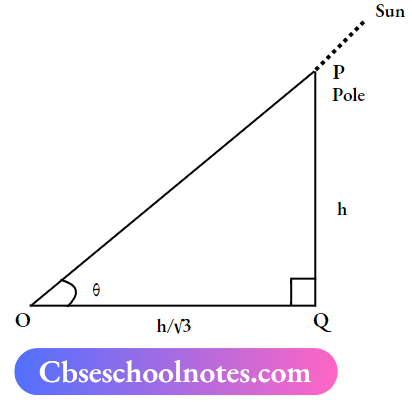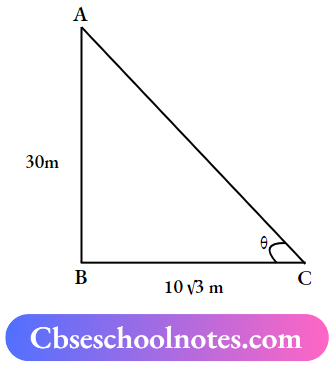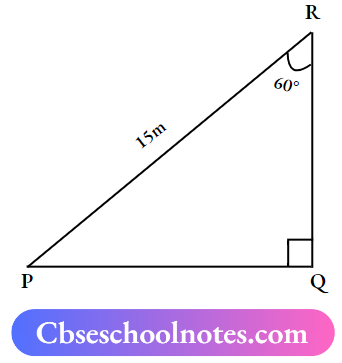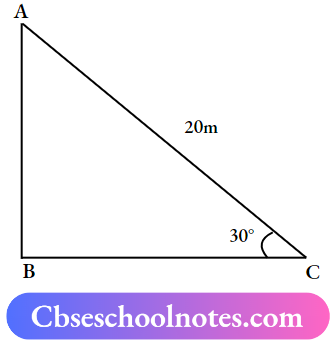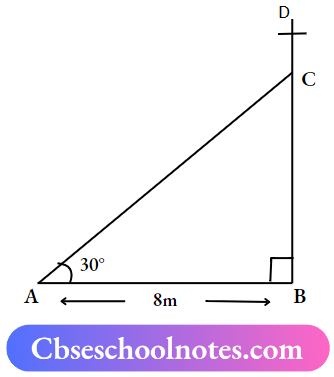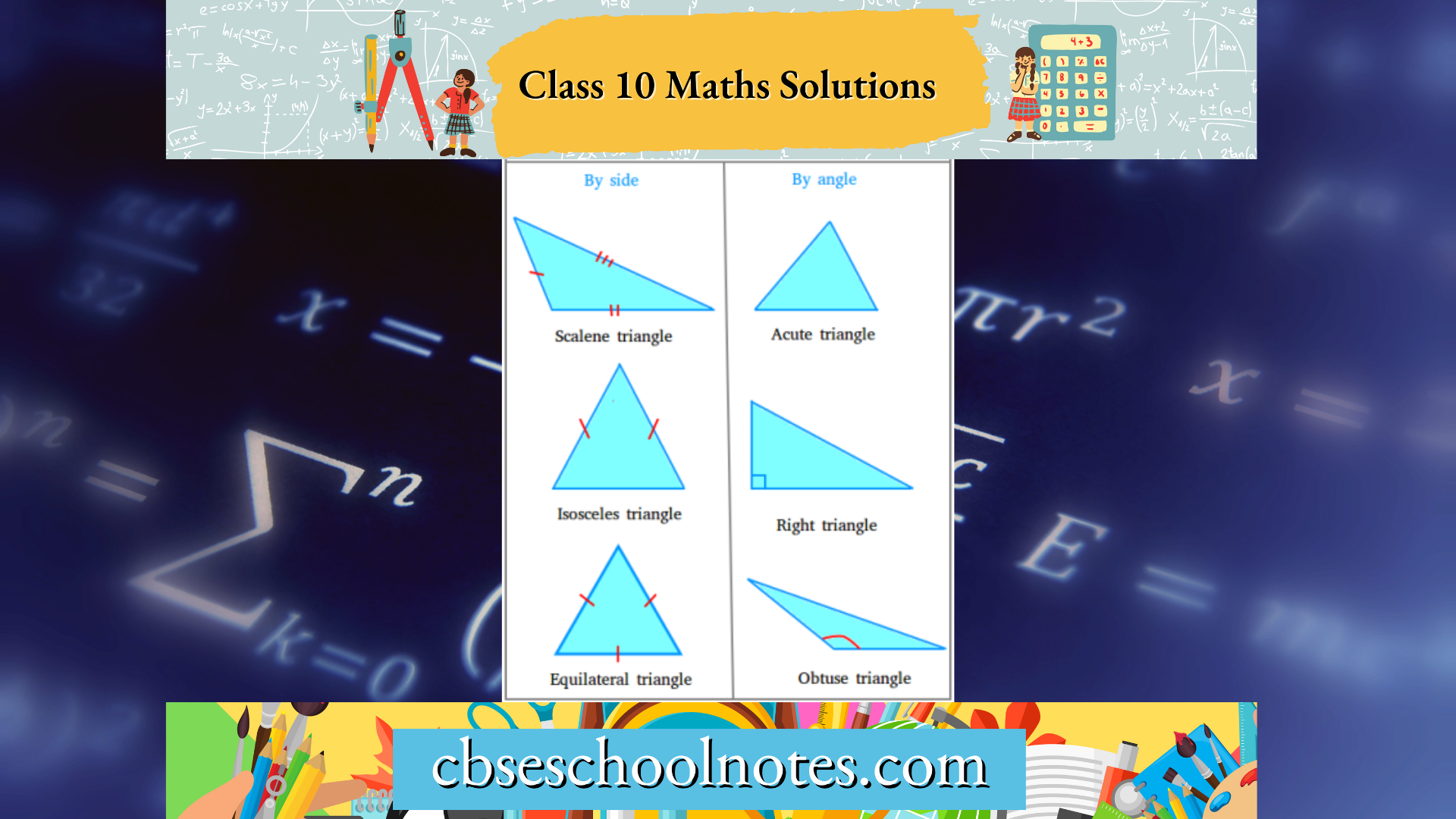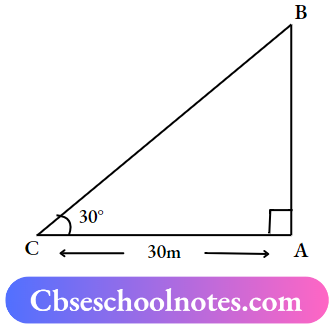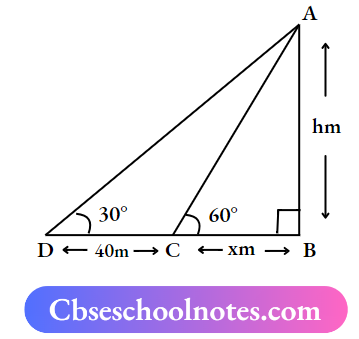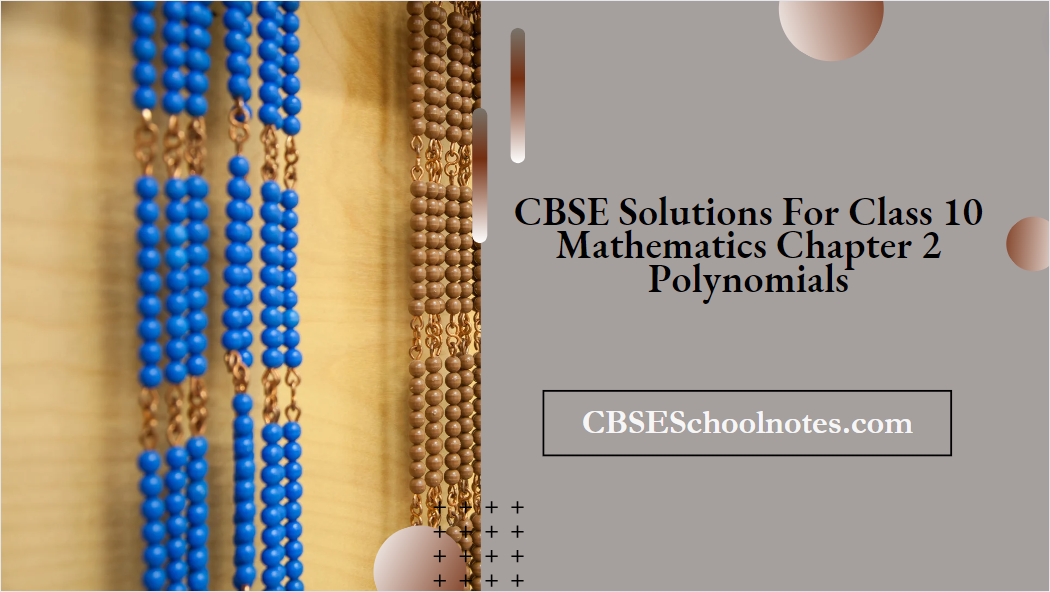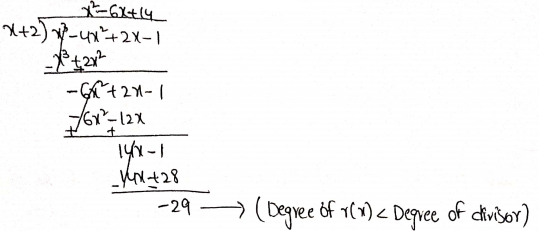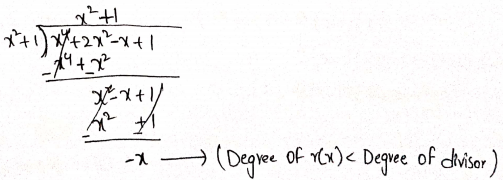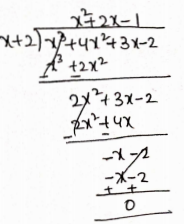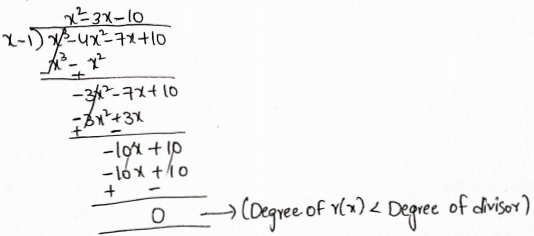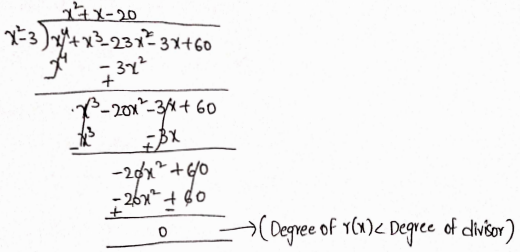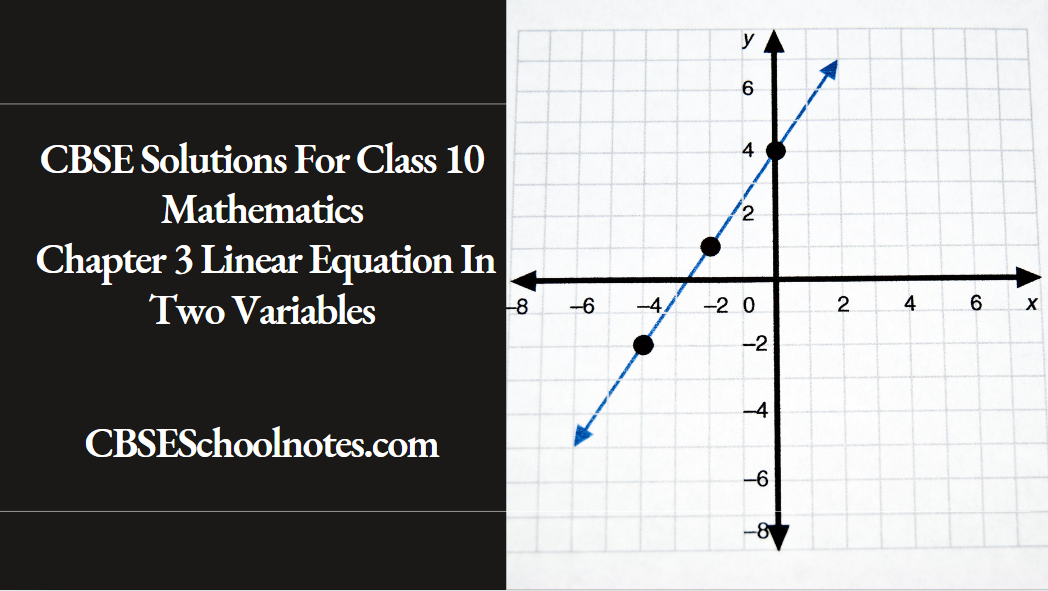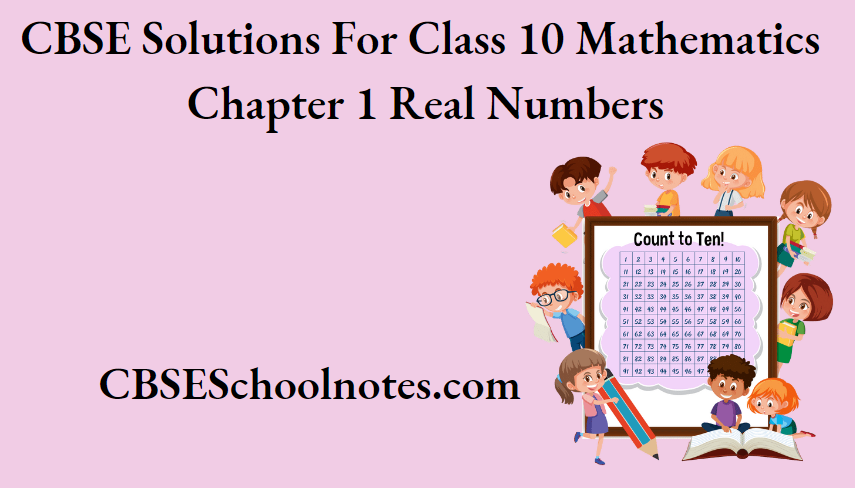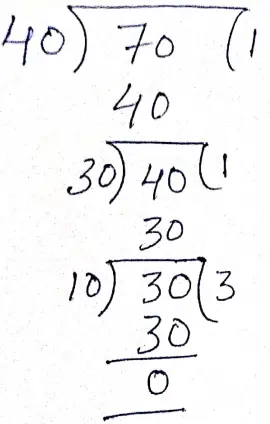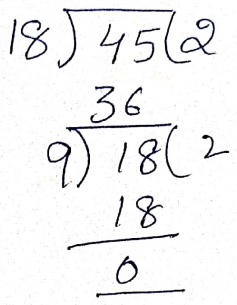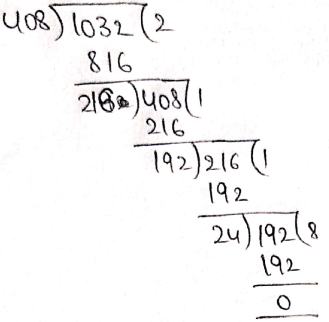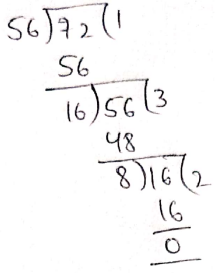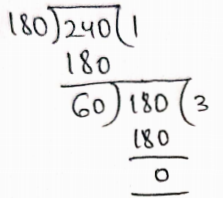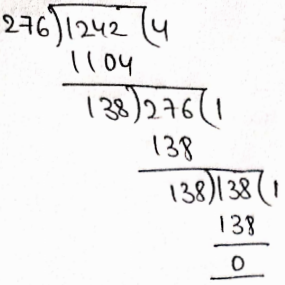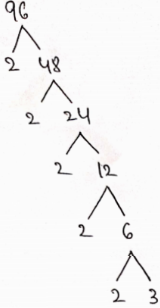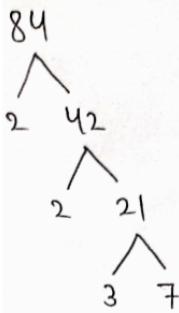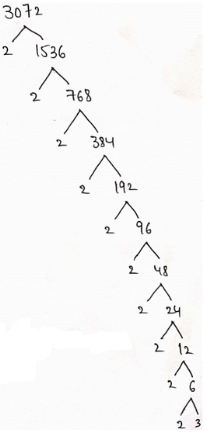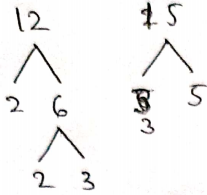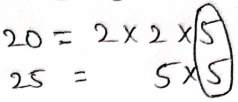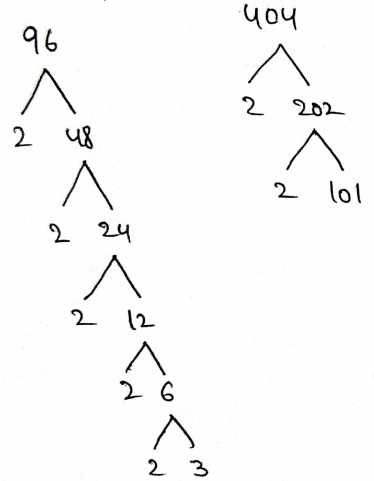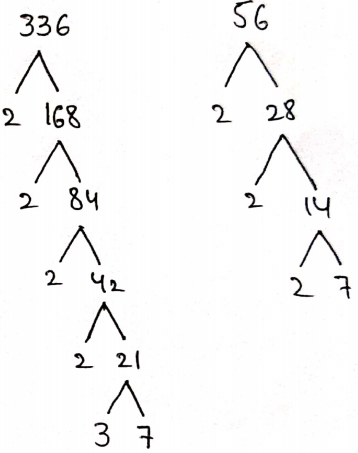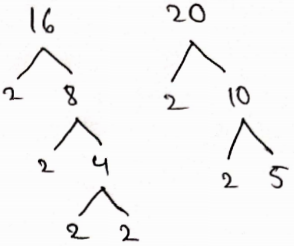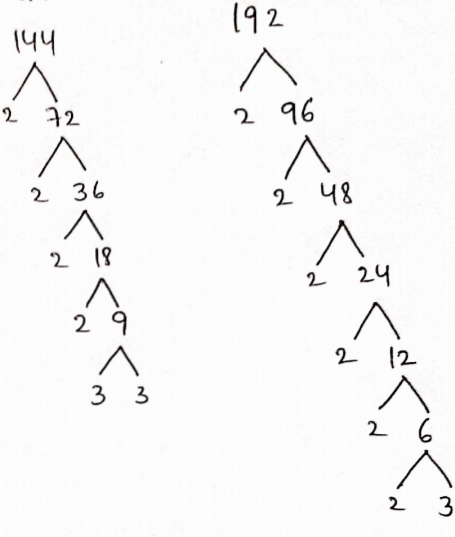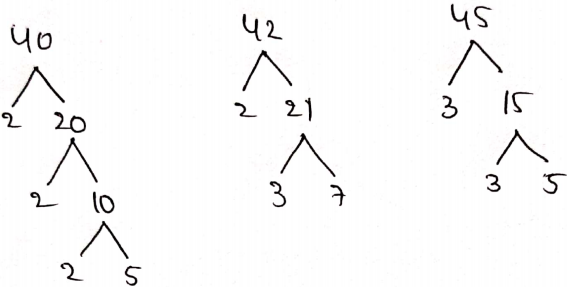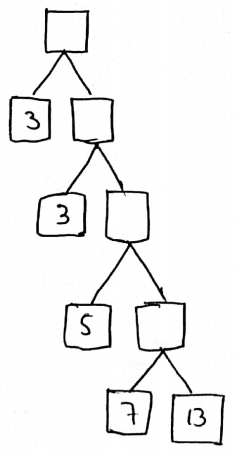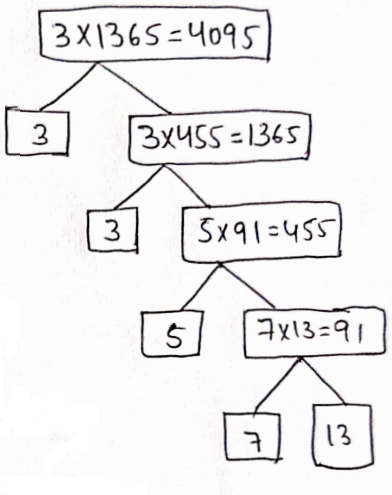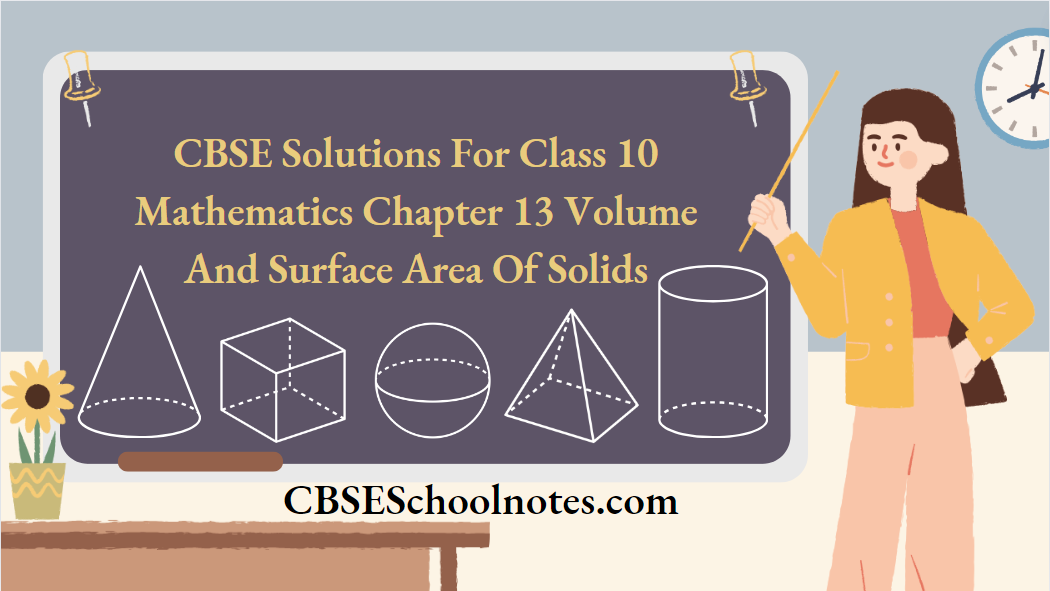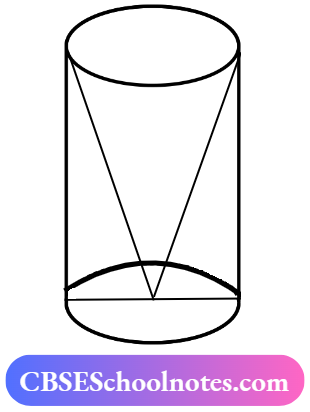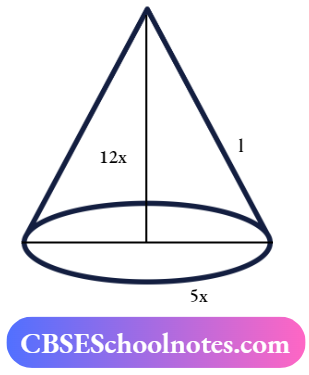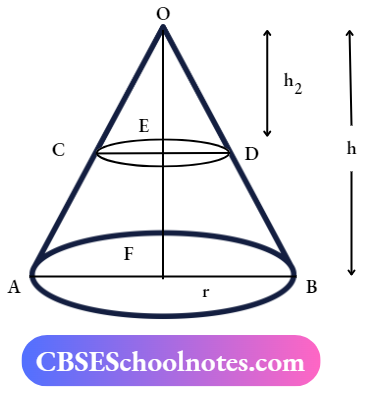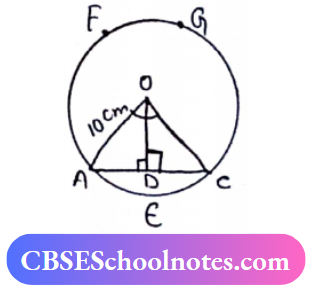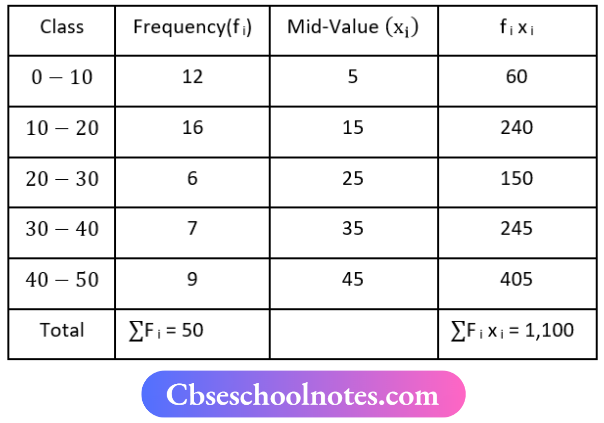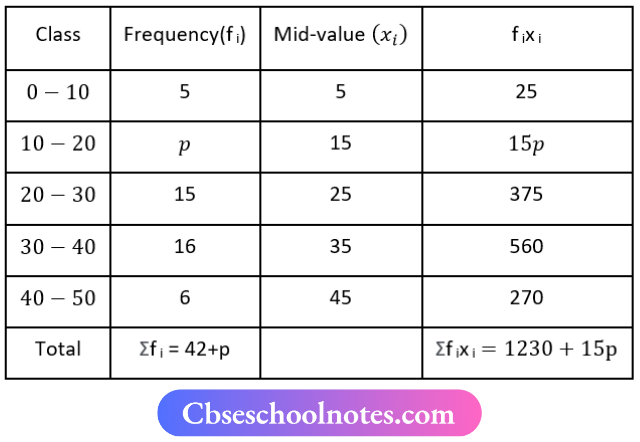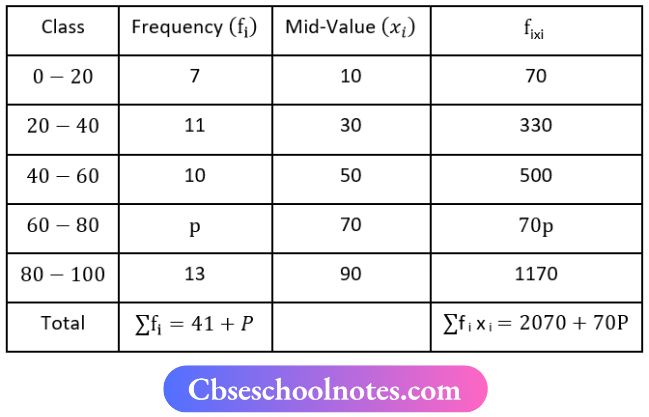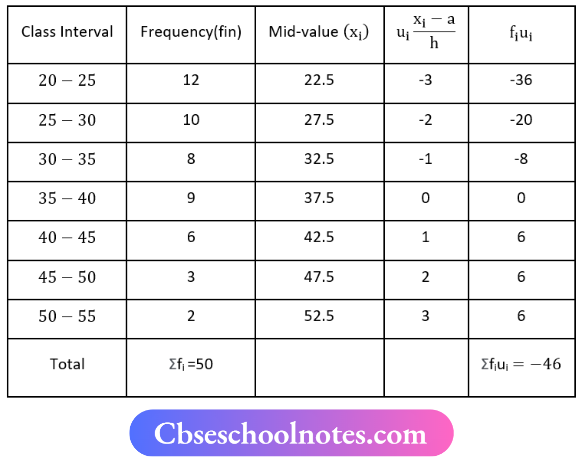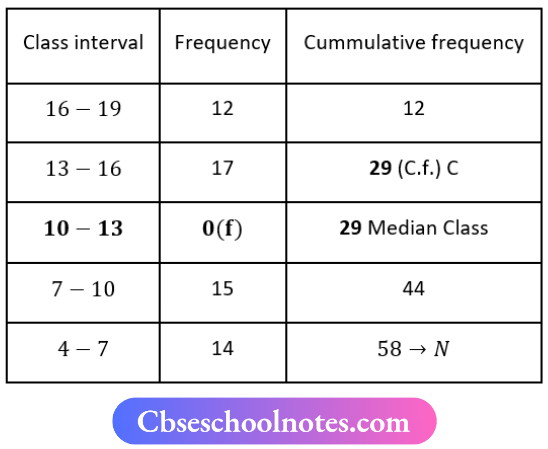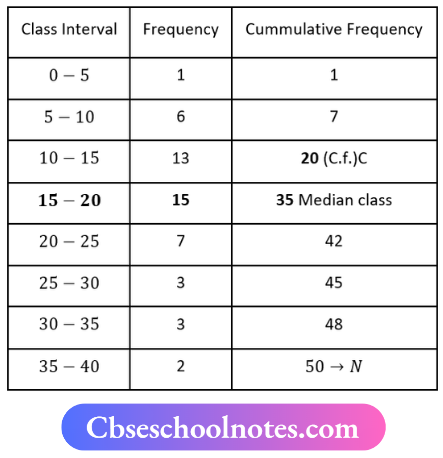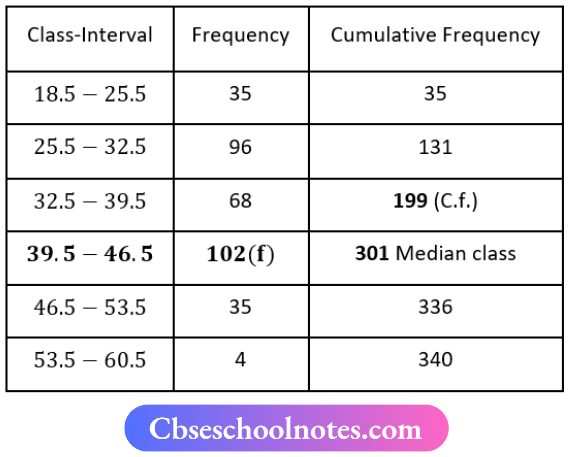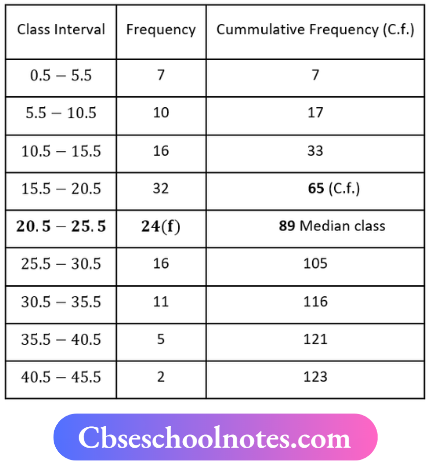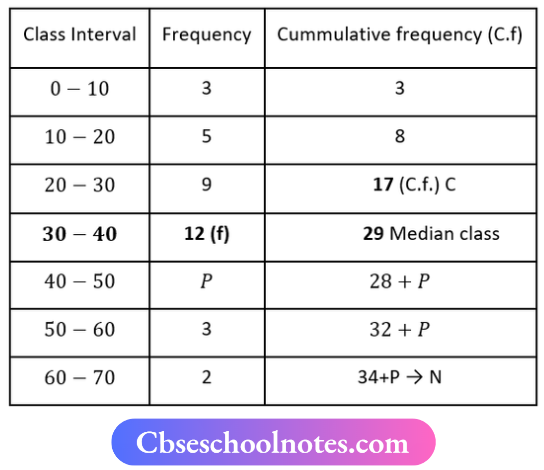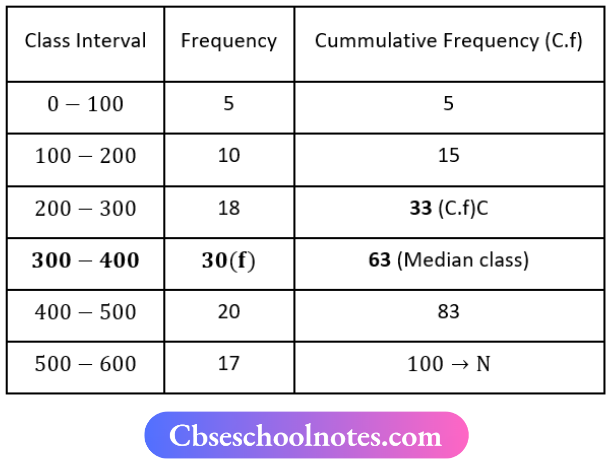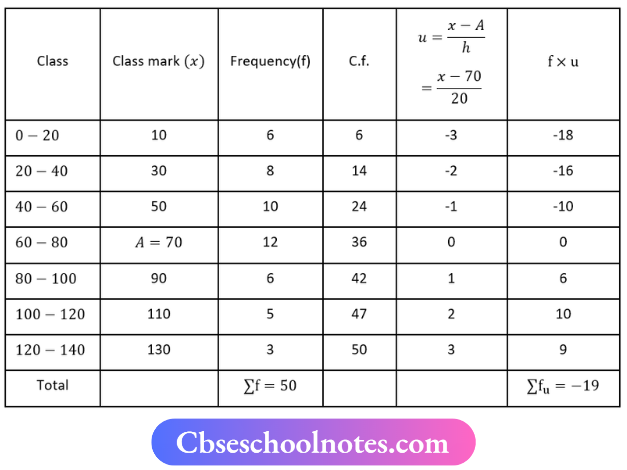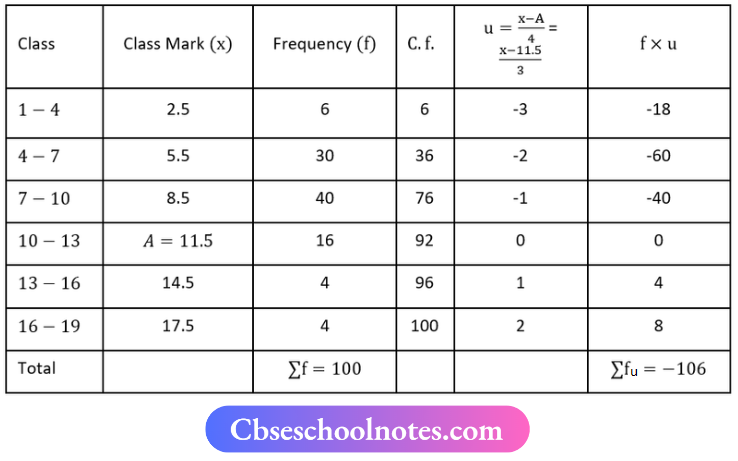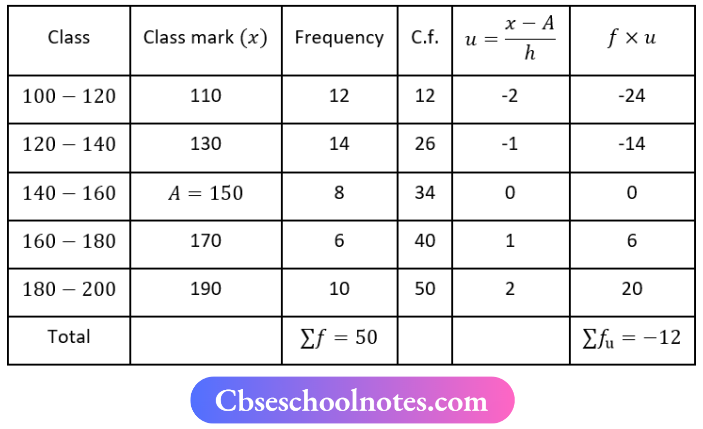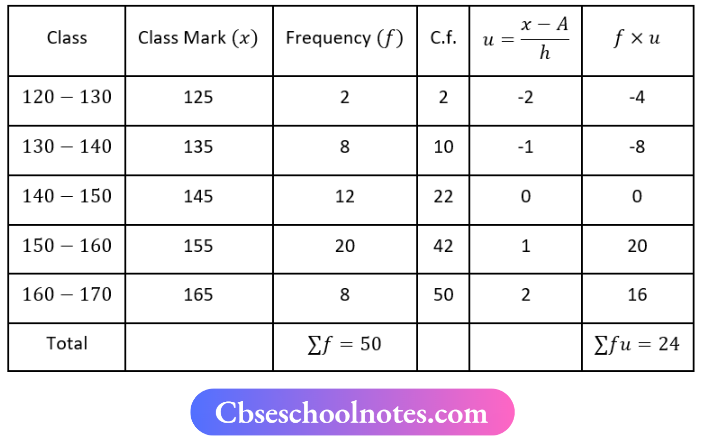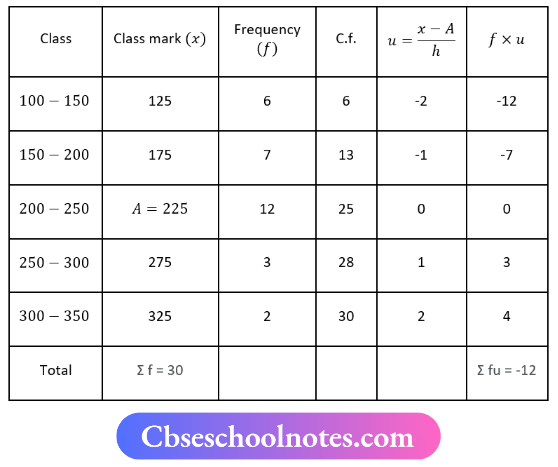Class 10 Maths Introduction To Trigonometry
Question 1. In ΔABC, ∠B = 90° and, Sin A = \(\frac{3}{5}\) , then find all other trigonometric rotiss for ∠A.
Solution:
Sin A = \(\frac{3}{5}=\frac{perpendicular}{\text { hypo }}\)

ΔABC
∠B=90°, BC=3t, AC=5k
AB2 + BC2= AC2
AB2 = AC2 – BC2
= (25k2) – (9k2)
AB2 = 16k2
AB = 4K
Read and Learn More Class 10 Maths
Cos A = \(=\frac{\text { base }}{\text { hypotenuse }}=\frac{A B}{A C}=\frac{4 k}{5 k}=\frac{4}{5}\)
tan A = \(\frac{\text {perpendicular }}{\text {base }}=\frac{B C}{A B}=\frac{3 k}{4 k}=\frac{3}{4}\)
Cosec A = \(\frac{\text { hypotenuse }}{\text { perpendicular }}=\frac{A C}{B C}=\frac{5 k}{3 k}=\frac{5}{3}\)
Sec A = \(\frac{\text { hypotenuse }}{\text { base }}=\frac{A C}{A B}=\frac{5 k}{4 k}=\frac{5}{4}\)
Cot A = \(\frac{\text { base }}{\text { perpendicular }}=\frac{A B}{B C}=\frac{4 k}{3 k}=\frac{4}{3}\)
Question 2. In ΔABC, ∠B = 90° and Cos A = \(\frac{9}{41}\), then find all other trigonometric ratios for ∠A.
Solution:
Cos A = \(\frac{9}{41}\)
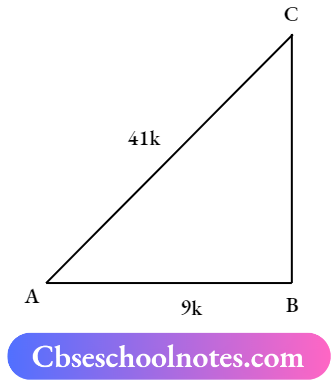
ΔABC
∠B=90°, AB=9k, AC = 41k
AB2 + BC2 = AC2
BC2 = AC2 – AB2
BC2 = (41k) = (9k)2
BC2 = 1681k2 – 81k2
BC2 = 1600k2
BC = 40k
Sin A = \(\frac{\text { perpendicular }}{\text { hypotemuse }}=\frac{B C}{A C}=\frac{40}{41}\)
tan A = \(\frac{\text { perpendicular }}{\text { base }}=\frac{B C}{A B}=\frac{40}{9}\)
Cosec A = \(\frac{\text { hypotenuse }}{\text { perpendicular }}=\frac{A C}{B C}=\frac{41}{40}\)
SecA = \(\frac{\text { hypotenusc }}{\text { base }}=\frac{A C}{A B}=\frac{41}{9}\)
Cot A = \(\frac{\text { base }}{\text { perpendicular }}=\frac{A B}{B C}=\frac{9}{40}\)
Question 3. In ΔABC, ∠A= 90° and tan B= \(\frac{5}{6}\), then find all other trigonometric ratios for ∠B.
Solution:
ΔABC, ∠Ạ = 90°
tan B = \(\frac{\text { Perpendicular }}{\text { Base }}=\frac{5}{6}\)
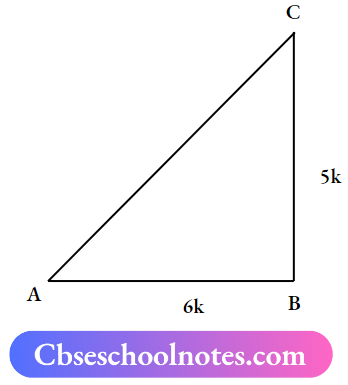
AC = 6K, BC=5K
AB2 = AC2+BC2
AB2 = (6k)2 + (5k)2
AB2 = 36k2 +25k2
AB2 = 61k2
AB = \(\sqrt{61 k}\)
Sin B = \(\frac{\text { Perpendicular }}{\text { hyotenuse }}=\frac{B C}{A B}=\frac{5 K}{\sqrt{61 K}}=\frac{5}{\sqrt{61}}\)
Cos B = \(\frac{\text { base }}{\text { hypotenuse }}=\frac{A C}{A B}=\frac{6 k}{\sqrt{61 k}}=\frac{6}{\sqrt{61}}\)
Cosec B = \(\frac{\text { hypotenuse }}{\text {Perpendicular}}=\frac{A B}{B C}=\frac{\sqrt{61}}{5}\)
Sec B = \(\frac{\text { hypotenuse }}{\text { base }}=\frac{A B}{A C}=\frac{\sqrt{61}}{6}\)
Cot B = \(\frac{\text { base }}{\text { perpendicular }}=\frac{A C}{B C}=\frac{6}{5}\)

Question 4. In ΔPQR, ∠R = 90° and Cosec P =\(\frac{13}{5}\), then find all trignometric ratio for ∠Q.
Solution:
ΔPQR, ∠R=90°
Cosec P = \(=\frac{\text { hypotenuse }}{\text { perpendicular }}=\frac{13}{5}=\frac{P Q}{Q R}\)
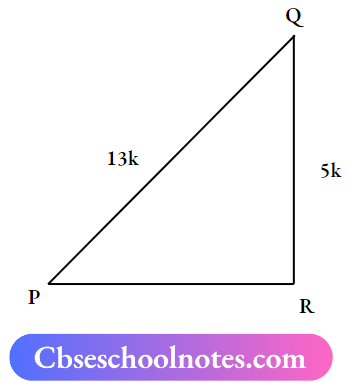
PR2 + QR2 = PQ2
PQ = 13K, QR = 5k
PR2 = PQ2 – QR2
= (13k)2– (5k)2
PR2 = 169k2-25k2
PR2 = 144k2
PR = 12k
Sin Q = \(\frac{\text { perpendicular }}{\text { hypotenuesc }}=\frac{Q R}{P Q}=\frac{5 K}{13 K}=\frac{5}{13}\)
Cos Q = \(\frac{\text { base }}{\text { hypdenuse }}=\frac{P R}{P Q}=\frac{12 k}{13 k}=\frac{12}{13}\)
tan Q = \(\frac{\text { perpendicular }}{\text { base }}=\frac{Q R}{P R}=\frac{5 k}{12 k}=\frac{5}{12}\)
Sec Q = \(\frac{\text { hypotenuse }}{\text { base }}=\frac{P Q}{P R}=\frac{13 k}{12 k}=\frac{13}{12}\)
Cot Q = \(=\frac{\text { base }}{\text { perpendicular }}=\frac{P R}{Q R}=\frac{12 k}{5 k}=\frac{12}{5}\)
Question 5. In ΔABC, ∠C = 90° and Sec B = \(\frac{5}{4}\), then find all other trigonometric ratios for ∠B.
Solution:
SecB = \(\frac{\text { hypo }}{\text { base }}=\frac{5}{4}=\frac{A B}{A C}\)
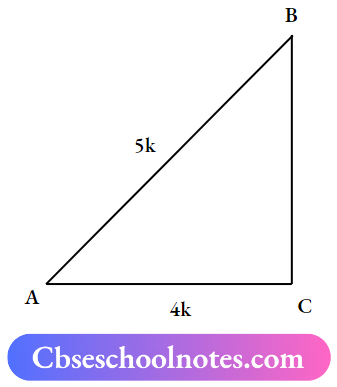
AB = 5K, AC = 4K
BC2 = AB2 – AC2
BC2 = (5k)2 = (4k)2
BC2 = 25k2 – 16k2
BC2 = 9k2
BC = 3K
Sin B = \(\frac{\text { perpendiular }}{\text { hypo }}=\frac{B C}{A C}=\frac{3 k}{4 k}=\frac{3}{4}\)
COS B = \(\frac{\text { base }}{\text { hypo }}=\frac{A B}{A C}=\frac{5 k}{4 k}=\frac{5}{4}\)
tan B = \(=\frac{\text { perpendicular }}{\text { base }}=\frac{B C}{A B}=\frac{3 k}{5 k}=\frac{3}{5}\)
Cosec B = \(\frac{\text { hypo }}{\text { base }}=\frac{A C}{B C}=\frac{4 k}{3 k}=\frac{4}{3}\)
Cot B = \(=\frac{\text { base }}{\text { perpendicular }}=\frac{A B}{B C}=\frac{5 k}{3 k}=\frac{5}{3}\)
Question 6. If tanθ = 2, then they find the value of \(\frac{2 \sin \theta \cos \theta}{\cos ^2 \theta-\sin ^2 \theta}\)
Solution:
tanθ = 2 = \(\frac{\sin \theta}{\cos \theta}=\frac{2}{1}\)
⇒ \(\frac{2 \sin \theta \cos \theta}{\cos ^2 \theta-\sin ^2 \theta}\)
⇒ \(\frac{2(2)(1)}{(1)^2-(2)^2}\)
⇒ \(\frac{4}{1-4}\)
⇒ \(\frac{-4}{3}\)
Question 7. If tanθ = \(\tan \theta=\frac{a}{b},\), then find the value of \(\frac{2 \sin \theta-3 \cos \theta}{2 \sin \theta+3 \cos \theta}\)
Solution:
⇒ \(\tan \theta=\frac{a}{b}\)
⇒ \(\frac{\sin \theta}{\cos \theta}=\frac{a}{b}\)
⇒ \(\frac{2 \sin \theta-3 \cos \theta}{2 \sin \theta+3 \cos \theta}\)
⇒ \(\frac{2 a-3 b}{2 a+3 b}\)
Question 8. If tanθ = \(\frac{3}{5}\), then find the Value of \(\frac{2 \sin \theta-3 \cos \theta}{2 \sin \theta+3 \cos \theta}\)
Solution:
⇒ \(\tan \theta=\frac{3}{5}\)
⇒ \(\frac{\sin \theta}{\cos \theta}=\frac{3}{5}\)
⇒ \(\frac{3 \sin \theta+4 \cos \theta}{3 \sin \theta-4 \cos \theta}\)
⇒ \(\frac{3(3)+4(5)}{3(3)-4(5)}\)
⇒ \(\frac{9+20}{9-20}\)
⇒ \(\frac{-29}{11}\)
Question 9. Find the value of Sin 60° Cos 30° – Cos 60° sin 30°.
Solution:
Sin 60° Cos 30°- Cos 60° Sin 30°
⇒ \(\left(\frac{\sqrt{3}}{2}\right)\left(\frac{\sqrt{3}}{2}\right)-\left(\frac{1}{2}\right)\left(\frac{1}{2}\right)\)
⇒ \(\left(\frac{\sqrt{3}}{2}\right)^2-\left(\frac{1}{2}\right)^2\)
⇒ \(\frac{3}{4}-\frac{1}{4}\)
⇒ \(\frac{12-4}{16}\)
⇒ \(\frac{8}{16}\)
⇒ \(\frac{1}{2}\)
Question 10. Find the Value of \(\frac{2 \tan 30^{\circ}}{1-\tan ^2 30^{\circ}}\)
Solution:
⇒ \(\frac{2 \tan 30^{\circ}}{1-\tan ^2 30^{\circ}}\)
⇒ \(\frac{2\left(\frac{1}{\sqrt{3}}\right)}{1-\left(\frac{1}{\sqrt{3}}\right)^2}\)
⇒ \(\frac{\frac{2}{\sqrt{3}}}{1-\frac{1}{3}}\)
⇒ \(\frac{\frac{2}{\sqrt{3}}}{\frac{3-1}{3}}\)
⇒ \(\frac{\frac{2}{\sqrt{3}}}{\frac{2}{3}}\)
⇒ \(\sqrt{3}\)
Question 11. Find the value of 2sin 30° Cos30°
Solution:
2 sin 30° Cos 30°
⇒ \(2\left(\frac{1}{2}\right)\left(\frac{\sqrt{3}}{2}\right)\)
⇒ \(2\left(\frac{\sqrt{3}}{4}\right)\)
⇒ \(\frac{\sqrt{3}}{2}\)
Question 12. Show that: 5 Cos2 60° + 4 sec2 30° tan2 4s° + Cos2 90° = \(\frac{67}{12}\)
Solution:
5 Cos2 60° + 4 Sec2 30° – tan2 45° + Cos2 90°
⇒ \(5\left(\frac{1}{2}\right)^2+4\left(\frac{2}{\sqrt{3}}\right)^2-1+(0)^2\)
⇒ \(5\left(\frac{1}{4}\right)+4\left(\frac{4}{3}\right)-1\)
⇒ \(\frac{5}{4}+\frac{16}{3}-1\)
⇒ \(\frac{3 \times 5+4 \times 16-12}{12}\)
⇒ \(\frac{15+64-12}{12}\)
⇒ \(\frac{67}{12}\)
Question 13. Find the value of 4sin2 30° + tan2 60° + Sec2 45°
Solution:
4sin2 30°+ tan2 60°+ Sec2 45°.
⇒ \(4\left(\frac{1}{2}\right)^2+(\sqrt{3})^2+(\sqrt{2})^2\)
⇒ \(4\left(\frac{1}{4}\right)+3+2\)
= 1+3+2
= 6
Question 14. Find the Value of \(\frac{\sin 30^{\circ}}{\cos ^2 45^{\circ}}-\tan ^2 60^{\circ}+3 \cos 90^{\circ}+\sin 0^{\circ}\)
Solution:
⇒ \(\frac{\sin 30^{\circ}}{\cos ^2 45^{\circ}}-\tan ^2 60^{\circ}+3 \cos 90^{\circ}+\sin 0^{\circ}\)
⇒ \(\frac{\frac{1}{2}}{\left(\frac{1}{\sqrt{2}}\right)^2}-(\sqrt{3})^2+3(0)+0\)
⇒ \(\frac{\frac{1}{2}}{\frac{1}{2}}-3\)
⇒ 1 – 3 = -2
Question 15. Evaluate: \(\frac{\sin ^2 30^{\circ}+\sin ^2 45^{\circ}-4 \cot ^2 60^{\circ}}{2 \sin 30^{\circ} \cos 30^{\circ}+\frac{1}{2} \tan 60^{\circ}}\)
Solution:
⇒ \(\frac{\sin ^2 30^{\circ}+\sin ^2 45^{\circ}-4 \cot ^2 60^{\circ}}{2 \sin 30^{\circ} \cos 30^{\circ}+\frac{1}{2} \tan 60^{\circ}}\)
⇒ \(\frac{\left(\frac{1}{2}\right)^2+\left(\frac{1}{\sqrt{2}}\right)^2-4\left(\frac{1}{\sqrt{3}}\right)^2}{2\left(\frac{1}{2}\right)\left(\frac{\sqrt{3}}{2}\right)+\frac{1}{2}(\sqrt{3})}\)
⇒ \(\frac{\frac{1}{4}+\frac{1}{2}-4\left(\frac{1}{3}\right)}{\frac{\sqrt{3}}{2}+\frac{\sqrt{3}}{2}}\)
⇒ \(\frac{\frac{1}{4}+\frac{1}{2}-\frac{4}{3}}{\frac{2 \sqrt{3}}{4}}\)
⇒ \(\frac{\frac{1}{6}-\frac{4}{3}}{\frac{2 \sqrt{3}}{4}}\)
⇒ \(\frac{\frac{1-8}{6}}{\frac{2 \sqrt{3}}{4}}\)
⇒ \(\frac{\frac{-7}{6}}{\frac{2 \sqrt{3}}{4}}\)
⇒ \(\frac{\frac{-7}{6}}{\frac{\sqrt{3}}{2}}\)
⇒ \(\frac{-7}{12 \sqrt{3}}\)
Question 16. Show that: \(\sin 60^{\circ}=\frac{2 \tan 30^{\circ}}{1+\tan ^2 30^{\circ}}\)
Solution:
⇒ \(\sin 60^{\circ}=\frac{2 \tan 30^{\circ}}{1+\tan ^2 30^{\circ}}\)
⇒ \(\frac{\sqrt{3}}{2}=\frac{2\left(\frac{1}{\sqrt{3}}\right)}{1+\left(\frac{1}{\sqrt{3}}\right)^2}\)
⇒ \(\frac{\sqrt{3}}{2}=\frac{\frac{2}{\sqrt{3}}}{1+\frac{1}{3}}\)
⇒ \(\frac{\sqrt{3}}{2}=\frac{\frac{2}{\sqrt{3}}}{\frac{4}{3}}\)
⇒ \(\frac{\sqrt{3}}{2}=\frac{1}{\frac{2}{\sqrt{3}}}\)
⇒ \(\frac{\sqrt{3}}{2}=\frac{\sqrt{3}}{2}\)
Question 17. Show that: Cos2 60°- Sin2 60° = -Sin30°
Solution:
Cos2 60°-sin260°= -Sin30°
⇒ \(\frac{1}{4}-\frac{3}{4}= -\frac{1}{2}\)
⇒ \(\frac{-2}{4}=\frac{-1}{2}\)
⇒ \(\frac{-1}{2}=\frac{-1}{2}\)
Question 18. Show that: tan 60° = \(\tan 60^{\circ}=\frac{2 \tan 30^{\circ}}{1-\tan ^2 30^{\circ}}\)
Solution:
⇒ \(\tan 60^{\circ}=\frac{2 \tan 30^{\circ}}{1-\tan ^2 30^{\circ}}\)
⇒ \(\sqrt{3}=\frac{2\left(\frac{1}{\sqrt{3}}\right)}{1-\left(\frac{1}{\sqrt{3}}\right)^2}\)
⇒ \(\sqrt{3}=\frac{2 / \sqrt{3}}{1-\frac{1}{3}}\)
⇒ \(\sqrt{3}=\frac{2/ \sqrt{3}}{\frac{3-1}{3}}\)
⇒ \(\sqrt{3}=\frac{2 / \sqrt{3}}{2 / 3}\)
⇒ \(\sqrt{3}=\frac{1}{1 / \sqrt{3}}\)
⇒ \(\sqrt{3}=\sqrt{3}\)
Question 19. Show that: \({Cos} 30^{\circ}=\sqrt{\frac{1+\cos 60^{\circ}}{2}}\)
Solution:
⇒ \({Cos} 30^{\circ}=\sqrt{\frac{1+\cos 60^{\circ}}{2}}\)
⇒ \(\frac{\sqrt{3}}{2}=\sqrt{\frac{1+\frac{1}{2}}{2}}\)
⇒ \(\frac{\sqrt{3}}{2}=\sqrt{\frac{2+1}{2}}\)
⇒ \(\frac{\sqrt{3}}{2}=\sqrt{\frac{\frac{2+1}{2}}{2}}\)
⇒ \(\frac{\sqrt{3}}{2}=\sqrt{\frac{\frac{3}{2}}{2}}\)
Question 20. Evaluate: \(\frac{\tan 45^{\circ}}{2 \sin 30^{\circ}-\cos 60^{\circ}}\)
Solution:
⇒ \(\frac{\tan 45^{\circ}}{2 \sin 30^{\circ}-\cos 60^{\circ}}\)
⇒ \(\frac{1}{2\left(\frac{1}{2}\right)-\frac{1}{2}}\)
⇒ \(\frac{1}{1-\frac{1}{2}}\)
⇒ \(\frac{1}{\frac{2-1}{2}}\)
⇒ \(\frac{1}{\frac{1}{2}}\)
= 2
Question 21. If A = 45°, then show that: Cos 2A = Cos2A – Sin2A
Solution:
Given A = 45°
Cos2(45°) = Cos2(45°)-Sin2(45°)
Cos 90° = \(\left(\frac{1}{\sqrt{2}}\right)^2-\left(\frac{1}{\sqrt{2}}\right)^2\)
0 = \(\frac{1}{2}-\frac{1}{2}\)
0 = 0
Question 22. If A=30° and B=60°, then show that: Cos (A+B) = CosA CosB – Sin A Sin B
Solution:
Given A= 30°, B=60°
Cos (30°+60°) = Cos 30° Cos 60° – Sin 30° Sin60°
⇒ \(\cos 90^{\circ}=\frac{\sqrt{3}}{2}\left(\frac{1}{2}\right)-\left(\frac{1}{2}\right) \frac{\sqrt{3}}{2}\)
0 = \(\frac{\sqrt{3}}{4}-\frac{\sqrt{3}}{4}\)
0=0
Question 23. If A = 30°, then show that: \(\tan 2 A=\frac{2 \tan A}{1-\tan ^2 A}\)
Solution:
Given A = 30°
tan 2(30°) = \(\frac{2 \tan 30^{\circ}}{1-\tan ^2 30^{\circ}}\)
tan 60° = \(\frac{2\left(\frac{1}{\sqrt{3}}\right)}{1-\left(\frac{1}{\sqrt{3}}\right)^2}\)
⇒ \(\sqrt{3}=\frac{2 / \sqrt{3}}{1-\frac{1}{3}}\)
⇒ \(\sqrt{3}=\frac{2 / \sqrt{3}}{\frac{3-1}{3}}\)
⇒ \(\sqrt{3}=\frac{2/\sqrt{3}}{2 / 3}\)
⇒ \(\sqrt{3}=\sqrt{3}\)
Question 24. If \(\cos \theta=\frac{\sqrt{3}}{2}\), then find the value of Sin 3θ.
Solution:
⇒ \(\cos \theta=\frac{\sqrt{3}}{2}\)
Cos θ = Cos30°
θ = 30°
= Sin 3θ
= Sin 3(30°)
= Sin 90°
= 1
Question 25. If tan (A+B) = \(\sqrt{3}\) and Sin (A-B) = \(\frac{1}{2}\), then find the value of tan (2A-3B)
Solution:
tan (A+B)= \(\sqrt{3}\)
Sin (A-B)= \(\frac{1}{2}\)
tan (2A-3B)
tan (A+B)= \(\sqrt{3}\)
A+B = 60°
Sin (A-B) = Sin 30° =) A-B = 30°
Acting equations

⇒ \(A=\frac{90^{\circ}}{2}=45^{\circ}\)
Subtracting equations

⇒ \(B=\frac{30^{\circ}}{2}\)
B = 15°
tan (2A-3B)
= tan (2(45°)-3((5°))
= tan (90°-45°)
= tan 45° = 1
Question 26. If A+B = 90° and tan A = \(\sqrt{3}\), then find the Value of B.
Solution:
A+B=90°
tan A = \(\sqrt{3}\)
tan A = tan 60°
A = 60°
60°+B=90°
B = 30°
Question 27. If A-B = 30° and Sin A = \(\frac{\sqrt{3}}{2}\), then find the value of B.
Solution:
A-B = 30°
Sin A = \(\frac{\sqrt{3}}{2}\)
Sin A = Sin 60°
A = 60°
60°-B = 30°
B = 30°
Question 28. \(\frac{1}{1+\tan ^2 \theta}+\frac{1}{1+\cos ^2 \theta}=1\)
Solution:
⇒ \(\frac{1}{1+\tan ^2 \theta}+\frac{1}{1+\cot ^2 \theta}\)
⇒ \(\frac{1}{1+\frac{\sin ^2 \theta}{\cos ^2 \theta}}+\frac{1}{1+\frac{\cos ^2 \theta}{\sin ^2 \theta}}\)
⇒ \(\frac{1}{\frac{\cos ^2 \theta+\sin ^2 \theta}{\cos ^2 \theta}}+\frac{1}{\frac{\sin ^2 \theta+\cos ^2 \theta}{\sin ^2 \theta}}\)
⇒ \(\frac{\cos ^2 \theta+\sin ^2 \theta}{1}\)
= 1 = R.H.S
Question 29. \(\sin ^2 \theta+\frac{1}{1+\tan ^2 \theta}=1\)
Solution:
⇒ \(\sin ^2 \theta+\frac{1}{1+\tan ^2 \theta}\)
⇒ \(\sin ^2 \theta+\frac{1}{1+\frac{\sin ^2 \theta}{\cos ^2 \theta}}\)
⇒ \(\sin ^2 \theta+\frac{\cos ^2 \theta}{1}\)
⇒ \(\sin ^2 \theta+\cos ^2 \theta\)
= 1 = R.H.S
Question 30. \(1+\frac{\cos ^2 \theta}{\sin ^2 \theta}-{cosec}^2 \theta=0\)
Solution:
⇒ \(1+\frac{\cos ^2 \theta}{\sin ^2 \theta}-{cosec}^2 \theta \Rightarrow \text { L.H.S }\)
⇒ \(1+\frac{\cos ^2 \theta}{\sin ^2 \theta}-\frac{1}{\sin ^2 \theta}\)
⇒ \(\frac{\sin ^2 \theta+\cos ^2 \theta-1}{\sin ^2 \theta}\)
⇒ \(\frac{1-1}{\sin ^2 \theta}=0=\text { R.H.S }\)
Question 31. \(\frac{1+\tan ^2 \theta}{{cosec}^2 \theta}=\tan ^2 \theta\)
Solution:
⇒ \(\text { L.H.S }=\frac{1+\tan ^2 \theta}{{cosec}^2 \theta}\)
⇒ \(\frac{1+\frac{\sin ^2 \theta}{\cos ^2 \theta}}{\frac{1}{\sin ^2 \theta}}\)
⇒ \(\frac{\frac{\cos ^2 \theta+\sin ^2 \theta}{\cos ^2 \theta}}{\frac{1}{\sin ^2 \theta}}\)
⇒ \(=\frac{1}{\cos ^2 \theta} \times \frac{\sin ^2 \theta}{1}\)
⇒ \(\tan ^2 \theta=\text { R.HS }\)
Question 32. Prove that: Cosec A-Cot A = \(\frac{1}{{cosec} A+\cot A}\)
Solution:
L.H.S = CosecA – Cota = \(({cosec} A-\cot A) \cdot \frac{({cosec} A+\cot A)}{({cosec} A+\cot A)}\)
⇒ \(\frac{{cosec}^2 A-\cot ^2 A}{{cosec} A+\cot A}\)
⇒ \(\frac{1}{{cosec} A+\cot A}\)
= R.H.S
Question 33. Prove that \(\frac{\sec A+1}{\tan A}=\frac{\tan A}{{Sec} A-1}\)
Solution:
L.H.S = \(\frac{\sec A+1}{\tan A}=\frac{\sec A+1}{\tan A} \times \frac{\sec A-1}{\sec A-1}\)
⇒ \(\frac{\sec ^2 A-1}{\tan A(\sec A-1)}=\frac{\tan ^2 A}{\tan A(\sec A-1)}\)
⇒ \(\frac{\tan A}{(\sec A-1)}\)
= R.H.S
Question 34. Check whether the equation \(\frac{\tan \phi+\sin \phi}{\tan \phi-\sin \phi}=\frac{\sec \phi+1}{\sec \phi-1}\) is an identity or not?
Solution:
L.H.S = \(\frac{\tan \phi+\sin \phi}{\tan \phi-\sin \phi}\)
⇒ \(\frac{\frac{\sin \phi}{\cos \phi}+\sin \phi}{\frac{\sin \phi}{\cos \phi}-\sin \phi}\)
⇒ \(\frac{\sin \phi \sec \phi+\sin \phi}{\sin \phi \sec \phi-\sin \phi}\)
⇒ \(\frac{\sin \phi(\sec \phi+1)}{\sin \phi(\sec \phi-1)}\)
⇒ \(\frac{\sec \phi+1}{\sec \phi-1}\)
= R.H.S
Question 35. If \(\cos ^2 30^{\circ}+\cos ^2 45^{\circ}+\cos ^2 60^{\circ}=x\), then find the value of “x”.
Solution:
⇒ \(\cos ^2 30^{\circ}+\cos ^2 45^{\circ}+\cos ^2 60^{\circ}=x\)
⇒ \(x=\left(\frac{\sqrt{3}}{2}\right)^2+\left(\frac{1}{\sqrt{2}}\right)^2+\left(\frac{1}{2}\right)^2\)
⇒ \(x=\frac{3}{4}+\frac{1}{2}+\frac{1}{4}\)
⇒ \(x=\frac{6+4+2}{8}\)
⇒ \(x=\frac{12}{8}\)
⇒ \(x=\frac{3}{2}\)
Question 36. Without using trigonometric tables, evaluate:
1. \(\frac{\sin 11^{\circ}}{\cos 79^{\circ}}\)
Solution:
⇒ \(\frac{\sin 11^{\circ}}{\cos 79^{\circ}}=\frac{\sin 11^{\circ}}{\left.\cos \left(90^{\circ}-79\right)^{\circ}\right)}=\frac{\sin 11^{\circ}}{\sin 11^{\circ}}=1\)
2. \(\frac{\sec 15^{\circ}}{{cosec} 75^{\circ}}\)
Solution:
⇒ \(\frac{\sec 15^{\circ}}{{cosec} 75^{\circ}}=\frac{\sec 15^{\circ}}{{cosec}\left(90^{\circ}-75^{\circ}\right)}=\frac{\sec 15^{\circ}}{{cosec} 15^{\circ}}=1\)
3. \(\frac{\tan 54^{\circ}}{\cot 36^{\circ}}\)
Solution:
⇒ \(\frac{\tan 54^{\circ}}{\cot 36^{\circ}}=\frac{\tan 54^{\circ}}{\cot \left(90^{\circ}-36^{\circ}\right)}=\frac{\tan 54^{\circ}}{\cot \left(90^{\circ}-36^{\circ}\right)}=\frac{\tan 54^{\circ}}{\tan 54{ }^{\circ}}=1\)
Question 37. Evaluate: tan42° – Cot 48°
Solution:
tan 42°-Cot 48° = tan 42°- Cot (90°- 42°)
tan42°-tan 42°
= 0
Question 38. Evaluate: Sex 36° – Cosec 54°
Solution:
Sec 36°- Cosec 54° = Sec 36° – Cosec (90°-36°)
= Sec 36° – Sec 36°
= 0
Question 39. Prove that: Sin 42°Cos 48°+ Sin 48° Cos42° = 1
Solution:
L.H.S= Sin 42° Cos48° + Sin48° Cos 42°
= Sin 42°cos (90°-42°)+ Sin(90° – 42°) Cos 42°
= Sin 42° Sin 42° + Cos42° Cos42°
Sin2 42° + Cos2 42°
= 1
Question 40. If Sin 3A = Cos(A-26°) where 3A is an acute angle, then find the value of A.
Solution:
Given that,
Sin 3A = Cos (A-26°)
Cos (90°-3A) = Cos (A-26°)
90°-3A = A-26°
-4A = -116°
A = 29°

